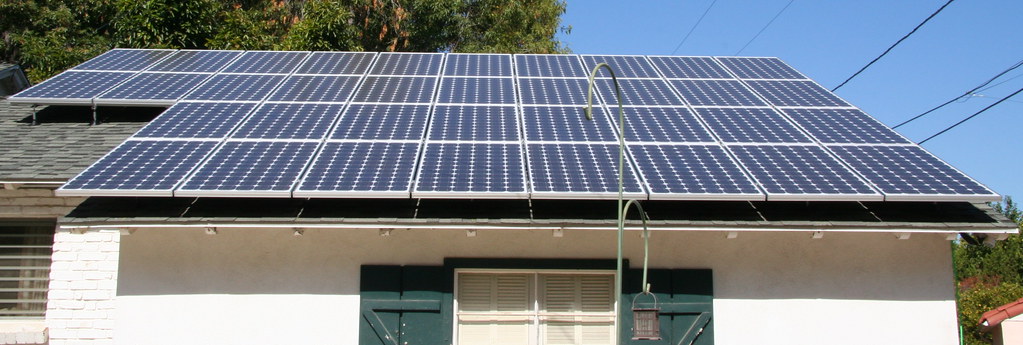The pandemic has blurred the usual distinction between weekday and weekend energy consumption. Because we’ve been forced to work or attend classes from home, we’re using our computers longer now, sometimes keeping them plugged in for the whole day. And with it, of course, is either a heating or a cooling system. Who can concentrate in a very cold or hot room indeed?
At the same time, the rest of our family members busy themselves with the hobbies they’ve acquired during the lockdowns. Some of them bake pastries non-stop, stream movies or TV series on Netflix, or played video games all day or all night long.
As a consequence, our monthly electric bills blew up, and they may increase even more when summer comes. This is terrible news if you’re still dependent on traditional fossil fuels for electricity. Your electric bills are already high enough under normal circumstances, so the pandemic must’ve been harsh on you.
Normal Energy Consumption vs. Pandemic Energy Consumption
In ordinary times, home electricity usage soars every morning, when people are waking up and getting ready for school or work. It drops by midday when people are already out of the house. Then it reaches its peak at night as people come back home and do their nightly rituals. The pandemic has upended that pattern.
Because there’s no more pressure to wake up early, more people slept in and pulled all-nighters. As a result, instead of a gradual decrease in energy consumption throughout the day, it became a smooth increase. Fortunately, commercial and industrial demand for electricity didn’t increase, so overall, energy consumption has actually declined. But that may not be the case anymore in the summer months.
Cooling an office with 25 employees costs less than cooling 25 homes. And all those 25 homes surely have at least one PC or laptop, which runs all day because of remote work or school. Many of those homes may also have a printer and other office equipment that requires energy. Keeping those machines on, along with the lights and cooling systems, will undoubtedly spike summer residential electricity bills.
Increasing water bills is another problem. Since we’re washing our hands more, our taps are being used more frequently within an hour or so. Plus, fancy self-care rituals became a hot topic during the lockdown, and so did dramatic bathroom remodeling projects. Hence, bathtubs were used more often, and some people added more plumbing fixtures in their bathrooms such as saunas or steam baths.
Internet usage, of course, also surged. Zoom consumes quite a lot of data. We also spent longer times on Netflix or YouTube. And younger people filled up their free time with online or video games.
From a wellness standpoint, these energy-heavy hobbies are not harmful, because they keep us busy and entertained during an uncertain period. But from an environmental standpoint, these are too costly. They hurt our energy efficiency and increase our carbon footprint, particularly if you’re using nonrenewable energy.
Effect of the Pandemic on Renewable Energy
Despite our increased energy consumption during the pandemic, prospects in the renewable energy sector are far from grim. In fact, energy generation through fossil fuels declined, and renewable power gained momentum.
In a recent poll by Verdict asking if COVID-19 initiated carbon reduction and made way for future renewable energy usage, 59% of respondents agreed. On the contrary, 22% disagreed, and 19% neither agreed nor disagreed.
However, it might be true that the pandemic has paved the way for higher renewable energy dependence. The lockdowns led to an 8% decline in energy-related emissions, and a 6% decrease in energy demand. In turn, the shares of renewable energy sources in electricity generation rose. To elaborate, renewable energy consumption grew by 40% in the U.S., 45% in India, and 3% globally.
Reasons to Switch to Renewable Energy
People’s awareness about the environmental effects of fossil fuels is growing. Yet, many are still hesitant to switch to renewable energy, especially solar power. Their judgments are plagued by misconceptions about the energy source, like:
- Solar doesn’t work in rainy and cloudy weather. This isn’t true, because no matter what the weather is, there’s still enough solar power.
- Solar panels are expensive. When solar panels were first introduced in the market, they really were pricey. But now, in 42 large cities in America, it’s cheaper to finance a residential solar panel system than to buy electricity from a local utility.
- Solar energy won’t save you money. This couldn’t be further from the truth; unlike fossil fuels, which may completely run out in the future, we’ll always have solar power. It will never experience a shortage that will drive your bills up.
Since we’re now living most of our lives at home, we might as well grab the opportunity to reduce our monthly bills. If we can’t cut down our energy consumption, let’s switch to a renewable source to avoid increasing our carbon footprint and the threat of irreversible climate change.















